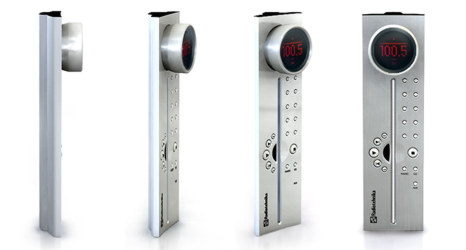
|
As to controls and interface, Radiotehnika R–100 stands out from among all currently marketed players. We came up with the idea of having two identical controls either of which can be used as a remote, or as the player’s front panel. What you commonly see is a remote control different—in terms of both appearance and interface—from the gadget it controls. R–100 interface was designed following the two principles we consider fundamental in any project. 1. The Unity of Content and FormYou may recall seeing some amplifier have elongated buttons placed in a row while its remote featured round buttons set in columns. And sometimes remote controls have buttons absent on the body of the device itself, or vice versa. The same function controls looking absolutely different is a serious interface problem. Why would the volume level control be designed as a knob on the player and as a pair of pushbuttons on the remote? It’s just awkward. It also leads to psychologic uneasiness for users fail to remember controls by touch. You won’t have any of these troubles with the convenient interface of R–100.  2. FeedbackIt gets even worse if there is no feedback. What is often done is just enabling one-way remote controlling. Let’s say you turn up the volume using a remote control. Volume indicator on the amplifier will show the change, but there will be no signs of it on the&nbps;remote. Moreover, producers give in to interface problems and often make discrete volume controls (+ and - buttons instead of a single knob). Now, imagine that you have identical controls on the player and on the remote. Suppose you covered the infrared transmitter with your hand and changed volume level. So, nothing would happened, but what if you removed your hand then? The&nbps;two would be found in different positions—which one would take control? Discrete controls allow to tackle this difficulty. That is why when you select channel 5 with your remote, you see only the built-in light indicator blink and no indicators on your remote. R–100 shows how this problem can be solved using radio controls to enable smooth exchange of signals and feedback.  |
 You can completely manipulate player either way—remotely or using controls on the front panel |